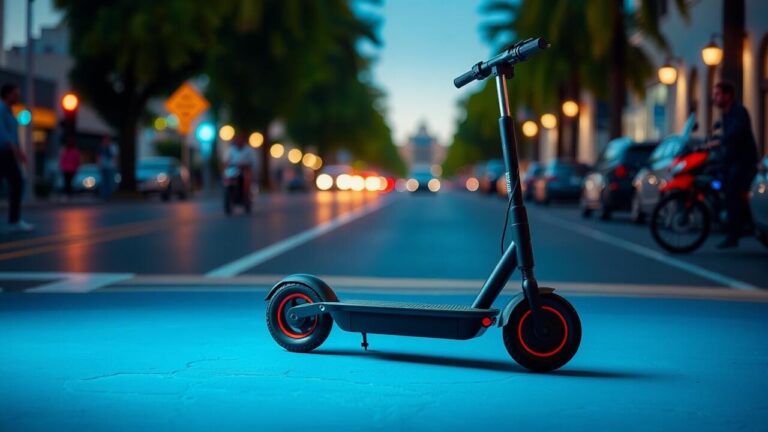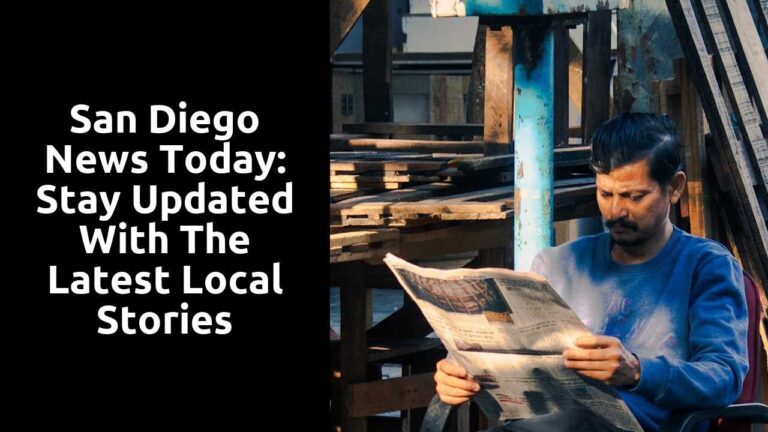Overview of Traffic Patterns during COVID 19 Pandemic in San Diego
Table Of Contents
Overview Of Traffic Patterns During COVID 19 Pandemic In San Diego | Comprehensive Overview of Traffic Patterns During COVID-19 Pandemic in San Diego
Key Takeaways
- Examination of vehicular movement alterations in San Diego amid the pandemic
- Effects of lockdowns on driving habits and behaviors
- Issues faced by public transit systems during the crisis
- Variations in traffic trends across different regions
- Implementation of safety protocols and enforcement of traffic regulations
- Lasting impacts on transportation patterns following the pandemic
Overview Of Traffic Patterns During COVID 19 Pandemic In San Diego | Traffic Volume Changes in San Diego During the Pandemic
The Overview of Traffic Patterns during COVID 19 Pandemic in San Diego reveals significant changes in traffic volume and flow throughout the city. During the covid-19 pandemic in San Diego, a marked decrease in traffic was observed as many residents adhered to stay-at-home orders, leading to a noticeable decline in commuting and travel. This shift reflected the broader impacts of the covid-19 pandemic, which caused disruptions not only in daily routines but also in the conventional traffic patterns typically seen in urban areas. Compared to pre-COVID levels, traffic congestion diminished remarkably, particularly along key routes that previously experienced heavy flow. As San Francisco and other major cities grappled with similar challenges, the overall traffic landscape in San Diego adapted in response to the spread of covid-19, demonstrating a unique intersection of public health and transportation dynamics. The implications of these changes continue to shape traffic behavior and policy considerations as cities navigate the aftermath of the covid-19 epidemic.
Overview of Traffic Patterns during COVID 19 Pandemic in San Diego | Comparison of PreCOVID and COVID Traffic Levels
The Overview of Traffic Patterns during COVID 19 Pandemic in San Diego reveals significant shifts from pre-COVID conditions. Traffic congestion drastically reduced as lockdown measures were enforced across California. With a notable decline in vehicles on the road, many residents altered their commuting habits in response to the covid-19 outbreak. San Diego County experienced a transformation in daily traffic dynamics, with less congestion reported during peak travel hours. As covid-19 cases surged, the decrease in vehicle usage highlighted the impact of the covid-19 crisis on transportation.
The initial phases of the covid-19 outbreak in China had a ripple effect across the globe, ultimately influencing traffic behaviors in San Diego. Pre-pandemic levels of traffic congestion were characterized by heavy vehicle flow, particularly during rush hours. The onset of the covid-19 pandemic shifted these patterns dramatically, leading to an unprecedented reduction in daily commutes. This evolution in traffic volumes not only reflects public health concerns but also showcases the adaptability of San Diego’s transportation landscape in response to the ongoing challenges posed by the pandemic.
Monthly Trends in Traffic Volume
The Overview of Traffic Patterns during COVID 19 Pandemic in San Diego reveals significant fluctuations in monthly traffic volume. Data indicates that vehicle counts dramatically decreased during the initial COVID-19 lockdown phases. Notably, traffic near the San Diego International Airport plummeted as travel restrictions were imposed. This was mirrored across major freeways and highways in the region, affecting both local and long-distance travel to destinations like Mexico City and beyond.
As time progressed, monthly trends evolved in response to changing COVID-19 infection rates and the emergence of new COVID variants. The San Diego Association of Governments reported gradual increases in traffic as restrictions were lifted, but volumes remained inconsistent due to ongoing public health measures. The California Department of Transportation noted that while some routes saw a bounce back, others experienced lingering reductions in daily usage, showcasing the lasting impact of the pandemic on commuting habits.
| Month | Average Daily Traffic Volume | Percentage Change from Previous Month |
|---|---|---|
| January 2020 | 350,000 | N/A |
| April 2020 | 90,000 | -74% |
| July 2020 | 180,000 | 100% |
| October 2020 | 240,000 | 33% |
| December 2021 | 320,000 | 33% |
Impact of COVID19 Lockdowns on Traffic Behavior
The Overview of Traffic Patterns during COVID 19 Pandemic in San Diego reveals significant shifts in commuter behavior influenced by lockdown measures. The University’s of California, San Diego and the University of San Diego saw a drastic decrease in student and faculty traffic, drastically altering rush-hour dynamics. The use of loop detectors highlighted changes in congestion levels on freeways, with many commuters opting for flexible work hours or remote work, reducing peak traffic times. Urban planners noted the increase in average speed on major routes, as the highways experienced less volume during typical rush hours. This transformation prompted discussions about future traffic management strategies to accommodate evolving patterns post-pandemic.
Effects of StayatHome Orders on Commuting Patterns
Stay-at-home orders significantly altered the commuting landscape for San Diego commuters during the COVID-19 pandemic. Many COVID-19 restrictions led to a notable decline in daily travel, shifting the overview of traffic patterns during COVID 19 pandemic in San Diego. Traffic flow peaks were drastically reduced, affecting overall traffic speeds in urban areas. The shift in travel behavior also prompted discussions about future urban planning, as cities reevaluated their transportation needs and the sustainability of commuting patterns in light of the pandemic.
The effects of these orders were not unique to San Diego; similar trends were observed across California, including in places like Sacramento. This period highlighted a major transformation in traffic patterns, where remote work and online activities became the norm. As a result, the overview of traffic patterns during COVID 19 pandemic in San Diego illustrated a sharp contrast to pre-pandemic life, allowing policymakers to consider innovative approaches to transportation and infrastructure post-pandemic.
Shifts in Peak Traffic Times
The Overview of Traffic Patterns during COVID 19 Pandemic in San Diego reveals significant shifts in peak period traffic. Traditional rush hours saw a notable decrease, resulting in altered traffic flow patterns on diego-area freeways. The decrease in commuters led to high quality traffic conditions with increased traffic speed throughout the day. However, with the emergence of COVID-19 clusters and subsequent spikes, traffic began to trend upward again, impacting the previously established flow patterns.
Analyzing weekend traffic during the pandemic also showed distinct changes. Many residents opted for leisure trips, contributing to a unique traffic flow peak that differed from the pre-pandemic norm. The San Diego region experienced fluctuations in vehicle numbers, leading to varying traffic levels not typically observed before the 19 pandemic. Understanding these shifts provides insight into how COVID-19 influenced commuting habits, shaping future traffic scenarios in the area.
Public Transportation and Its Challenges
The Overview of Traffic Patterns during COVID 19 Pandemic in San Diego reveals significant shifts in public transportation usage, particularly during the initial covid-19 response and subsequent emergency declarations. As average traffic flow demonstrated noticeable traffic flow differences, low-traffic Mondays emerged alongside the decline in ridership on public transit systems. Traffic time series data indicated a dramatic alteration in morning peak traffic, with congestion theories reevaluated in light of decreased overall vehicle numbers. The effects of these changes became evident as double-peaks in traffic flow replaced traditional patterns, challenging California freeway performance metrics and inspiring transit agencies to adapt strategies for the post-covid-19 era.
Ridership Decline During the Pandemic
The Overview of Traffic Patterns during COVID 19 Pandemic in San Diego highlights a significant decline in ridership across various public transportation systems. The reduced traffic flow was evident as many individuals opted for remote work and virtual schooling, leading to a decrease in weekday traffic. A traffic data analysis during this period showed a marked difference in urban traffic patterns compared to pre-COVID levels. With fewer commuters utilizing public transit options, overall traffic flow changed, contributing to reduced traffic congestion on highways and local streets.
Public transport networks faced unprecedented challenges due to the drop in ridership amid COVID. Many transit agencies reported diminished highway traffic, which directly impacted their operational budgets and the viability of services. Traffic data collected during the pandemic indicated a steep decline in network traffic flow across different regions. The overall trend demonstrated a shift in how residents navigated their cities, emphasizing the need for adaptations to meet new demands for safety and efficiency.
Adaptations Made by Public Transit Systems
Public transit systems in San Diego implemented various adjustments to address the implications of the COVID-19 pandemic. The overview of traffic patterns during COVID-19 pandemic in San Diego showed an unprecedented traffic drop, necessitating revised service schedules and increased sanitation measures. Transit agencies worked to reshape their operations in response to covid-induced changes, particularly focusing on shifts in weekend travel patterns and the reduced demand for pre-pandemic morning rides. Traffic experts analyzed the implications of these adjustments on traditional traffic flow, with an emphasis on maintaining effective service for essential workers.
Drivers and passengers experienced significant changes to commuting dynamics as public transit systems sought to adapt. With vehicles and cars off the road during peak hours, the reduction of rush-hour congestion allowed transit agencies to redefine their routes and schedules based on real-time data. Traffic network modeling became essential for understanding these adaptations and forecasting future needs. The ongoing transformations in public transit reflect the broader trends seen in the overview of traffic patterns during COVID-19 pandemic in San Diego, highlighting the critical role of public transportation in maintaining mobility amid unprecedented challenges.
- Increased sanitation protocols on buses and trains to ensure passenger safety.
- Implementation of contactless payment systems to reduce physical interactions.
- Revision of service schedules to align with changing passenger demand and travel patterns.
- Introduction of real-time tracking apps to provide passengers with updated transit information.
- Enhanced communication efforts to keep the public informed about service changes and health guidelines.
- Partnering with local health authorities to promote safe practices among commuters.
- Focus on equity in service distribution to support essential workers and underserved communities.
Regional Differences in Traffic Patterns
The Overview of Traffic Patterns during COVID 19 Pandemic in San Diego reveals notable regional differences in traffic behavior. During the late-pandemic periods, freeway performance measurement indicated significant variations in speeds across high-mobility areas compared to pre-COVID conditions. While daily vehicle travel dropped in some regions, others experienced congestion delays that mirrored patterns seen in other California cities. The diurnal curve pre-COVID highlighted a more consistent flow of traffic, yet the pandemic altered this dynamic, especially along major area freeways. The San Diego Association’s analysis underscores these shifts, showing how speeds fluctuated dramatically, influencing overall traffic conditions in Diego and surrounding areas.
Urban vs. Suburban Traffic Trends
The Overview of Traffic Patterns during COVID 19 Pandemic in San Diego reveals distinct differences between urban and suburban travel trends. Urban areas experienced a pronounced drop in congestion, aligning with congestion theory that indicates traffic peaks are directly influenced by population density and commuter behavior. The urban freeway network saw markedly reduced vehicle counts, while residential patterns shifted as more people adopted remote work. This led to changes in travel patterns, with fewer peak-time commutes, although pedestrian commuters in downtown San Diego remained relatively active, adapting to altered routines.
In stark contrast, suburban areas displayed a more gradual decline in traffic volume. Although congestion occurs less frequently in these regions, the effects of the pandemic manifested through changing travel habits. Real-time mobility trends indicated that suburban residents began to favor local destinations over longer trips, reflecting an adjustment to the new normal. As the pandemic influenced covid-19 health outcomes, freeway networks in San Diego County adjusted to these shifts, impacting how residents navigated their environments and chose their commuting routes.
| Traffic Pattern | Urban Areas | Suburban Areas | Key Changes |
|---|---|---|---|
| Overall Traffic Volume | Significantly decreased | Gradual decline | Reduction in peak-time commutes |
| Commuter Behavior | Shift to remote work | Preference for local destinations | Decreased long-distance travel |
| Pedestrian Activity | Increased in downtown | Less affected | Adaptation to new routines |
| Freeway Traffic | Markedly reduced counts | Adjustments for local travel | Changes in commuting routes |
Impact on Key Routes and Highways
The Overview of Traffic Patterns during the COVID 19 Pandemic in San Diego revealed significant changes in highway activity. Average speeds increased on local freeways, particularly during the peak commute period, as diego workers adapted to remote work and altered commuting habits. Open freeways became a common sight during weekdays, with weekday vehicle miles showing notable declines. The data collected from distributed detector stations and loop detector stations indicated a shift towards less congestion and different urban mobility patterns compared to pre-pandemic times.
Evening peaks were less pronounced, leading to a redistribution of traffic flows throughout the day. This shift in mobility patterns signaled a transformation in how San Diegans approached their daily travels. The fluctuations observed in highway activity during the pandemic provided insights into the changing behaviors of commuters and the evolving dynamics of transportation infrastructure in the region. Understanding these developments is vital for future planning and optimization of traffic management systems in San Diego.
Safety Measures and Traffic Law Enforcement
The Overview of Traffic Patterns during COVID 19 Pandemic in San Diego reveals a complex picture of transportation-related behaviors during this unprecedented time. As the pandemic affected urban mobility dynamics, residents in San Diego experienced significant changes in congestion patterns. Open highways and regional highways saw variations in traffic volume, reflecting different mobility shifts across the city. California household travel shifted dramatically, particularly during the evening peak period, with many commuters altering their routines. This transformation in mobility dynamics has prompted law enforcement to adapt their strategies, addressing both the decline in traffic violations and the need for enhanced safety measures for a changing urban landscape.
Changes in Traffic Violations and Accidents
The Overview of Traffic Patterns during COVID 19 Pandemic in San Diego revealed significant alterations in mobility changes and human mobility patterns. With strict lockdowns in place, vehicle miles traveled decreased sharply across different cities. Morning peak commuting hours saw dramatic drops in traffic volume, leading to a reduction in overall mobility and connectivity. Evening traffic patterns also shifted, reflecting the varying needs of residents during the pandemic.
Fewer vehicles on the roads resulted in changes in traffic violations and accidents. Law enforcement noticed a decline in certain types of infractions while some unexpected behaviors, such as speeding, increased. Transit agencies adapted their mobility networks to accommodate shifting patterns, focusing on safety initiatives to protect those still on the road. Understanding these dynamics is crucial for planning future transportation strategies in the wake of the pandemic’s effects.
Implementation of Road Safety Initiatives
The Overview of Traffic Patterns during COVID 19 Pandemic in San Diego highlighted significant changes in mobility data and spatial patterns. With the implementation of road safety initiatives, local authorities aimed to address the disruptions caused by a sharp decline in commuters. The loss of commuters affected unit travel time across various interstate routes. This shift prompted jurisdictions to analyze human mobility networks to better understand the extent of commuters’ loss and adjust strategies accordingly.
The household travel survey revealed the need for effective safety measures to support those who continued to travel during the pandemic. Agencies focused on enhancing road safety through increased signage and public awareness campaigns. These initiatives sought to alleviate concerns stemming from the dramatic alterations in travel behaviors observed in the Overview of Traffic Patterns during COVID 19 Pandemic in San Diego. By prioritizing safety, city officials aimed to foster confidence in the transportation infrastructure as commuters gradually returned to regular travel patterns.
- Increased signage to improve visibility and awareness of road safety measures
- Implementation of social media campaigns to educate the public on safe travel practices
- Collaborations with local businesses to promote safe transportation options
- Regular assessments of traffic patterns to adapt safety initiatives effectively
- Enhanced training programs for transportation personnel on road safety protocols
- Community engagement through workshops to gather feedback on road safety improvements
- Promotion of alternate transportation methods, such as biking and walking, to reduce road congestion
Longterm Effects on Traffic Patterns PostPandemic
The aftermath of the COVID-19 pandemic has significantly influenced movement patterns in San Diego. An overview of traffic patterns during the COVID-19 pandemic highlights a dramatic shift in how residents transited through various areas. The restrictions imposed during the pandemic altered daily routines, affecting travel time and reshaping the morning peak period. Planners now face the challenge of addressing the long-lasting implications of these changes, including the emergence of mobility hubs and the varying impact on high socioeconomic status (SES) neighborhoods. As cities adapt to these evolving patterns, the integration of public transit stations into future urban designs will be crucial for enhancing global mobility and accommodating the new norms of commuting.
Conclusion
The Overview of Traffic Patterns during COVID 19 Pandemic in San Diego reveals significant shifts in travel behaviors and network dynamics throughout the region. Alterations in commuting patterns resulted from stay-at-home orders, contributing to decreased congestion and a reevaluation of spatial interaction among residents. Observing these trends offers valuable insights into how essential routes and highways were affected, reshaping the overall landscape of transportation. The impact of the pandemic has not only modified current traffic conditions but also raised questions about the long-term implications for urban planning and infrastructure in San Diego. Understanding these changes is crucial for preparing future traffic systems and ensuring efficient travel in a post-pandemic world.
FAQS
How did the outbreak of COVID-19 affect traffic flow and congestion in San Diego County, California, particularly in relation to the studies conducted by the University of California, San Diego?
The impact of the COVID-19 pandemic led to notable changes in traffic patterns across San Diego County, California. Research from the University of California, San Diego indicated a significant COVID-19 increase in remote working, which altered commuting behaviors. Traffic congestion theory was observed with new double-peaks in traffic flow during the pandemic, affecting transiting time and detection. The extent of commuters’ loss was also analyzed as part of network measures, showing that high SES areas experienced distinct shifts in commuting trends during COVID-19 emergency declarations.
What was the extent of commuters’ loss in San Diego during the outbreak of COVID-19, and how did this impact traffic flow double-peaks in a pandemic California setting?
During the outbreak of COVID-19, San Diego experienced a significant extent of commuters’ loss, which led to unusual traffic patterns. Specifically, the traffic flow double-peaks were observed, with one peak occurring in the morning and another in the evening, reflecting changes in commuting behavior during the pandemic California restrictions.
What is the extent of commuters’ loss in Co-op City during the COVID-19 pandemic, and how did it relate to traffic patterns in San Diego?
The commuters’ loss extent in Co-op City during the COVID-19 pandemic is significant, as many individuals re-evaluated their transportation needs, which in turn affected traffic patterns in San Diego. The changes in commuting habits led to alterations in traffic flow, with fewer vehicles on the road and an overall impact on congestion levels in San Diego.
What factors contributed to the commuters’ loss extent in San Diego during the COVID-19 pandemic?
The commuters loss in San Diego during the COVID-19 pandemic was primarily influenced by remote work policies, stay-at-home orders, and a general fear of using public transportation. These factors led to a significant decrease in daily commuters, reflecting the extent of commuters loss in the region.
What insights can be gathered regarding the commuters’ loss extent in San Diego during the COVID-19 pandemic?
The commuters loss extent in San Diego during the COVID-19 pandemic was significant, reflecting broader trends seen across urban areas. Many individuals shifted to remote work, drastically reducing the number of daily commuters and altering traffic patterns throughout the region. This shift not only affected the total volume of traffic but also led to changes in peak travel times, as traditional rush hours became less pronounced.







